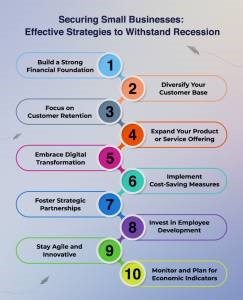
Change is inevitable. From starting school, to graduation, to work, to creating new relationships and a new family…and a thousand incidents in between. One major change many people confront is a career pivot — transitioning into a new career, even after many years in the same job.
Why is this so difficult? And how can you pivot to a new career more easily and seamlessly? These are a couple of the questions we’ll discuss here.
The Challenges of a Career Pivot
A career pivot can be downright scary, especially if you’ve been in your chosen career for a few decades. You’re venturing into new territory, a blank slate, with perhaps more questions than you would like.
What will you do? How will you begin? How will you explain your new career to others? How do you brand yourself? Should you take some online courses? Is it too late for a career change?
That last one is easy — no!
It’s never too late to late to try something new.
As for the other questions, I want to share some strategies and tactics To help you navigate the zigs and zags of a career change.
10 Strategies That Will Help You Succeed in Your Career Pivot
1. Prepare Yourself
If the idea of change causes you stress, then preparation might just be the antidote you need. Look at practical ways to prepare for your career transition — research, network with others, and learn new skills.
Your preparation should also include visualization. Imagine yourself in your new role. Picture potential challenges that might arise. Explore all the possibilities of your upcoming transition. This preparation will alleviate stress.
2. Analyze Your Reasons
It’s easy to think of the challenges, and even reasons, why you should not change. Instead, I want you to create a list of the benefits. Ask yourself (and write down the answers): Why is this a good move for you? What are your talents and skills? What makes you valuable in your new role? Returning to this list from time to time will help you to stay the course.
3. Create SMART Goals
SMART goals are goals that are…
- Specific
- Measurable
- Attainable
- Relevant
- Time-based
For example, a smart goal might be to launch a podcast and have 200 subscribers within 6 months. It’s specific. It’s measurable. And it’s attainable. Better yet, it’s relevant to building your personal brand. And you’re allotting 6 months to attain it.
Create several of these SMART goals to motivate yourself toward your career change.
4. Change Your View of Stress
Stress is a natural sidekick to any change. But instead of viewing it as annoying, reframe it as fuel to carry you forward. Stress provides energy to rise above and conquer a situation. Viewing it this way will help you cope better. It also allows you to control your narrative — you control how stress affects you instead of the reverse.
5. Practice Mindfulness
Any transition period — including a career change — brings with it feelings of uncertainty and agitation. Mindfulness is an excellent way to combat those feelings and focus on the tasks ahead. Studies have found that mindfulness practices like meditation even help to thicken your pre-frontal cortex, which is responsible for awareness, concentration, and decision-making. Who wouldn’t what that?
So take time to practice mindfulness. This could be a 10 minute breathing session you find on Youtube or a yoga class after work. Or using an app such as Calm, or just taking time to practice deep, gentle breathing. Whatever it might be, take time for you.
6. Rely on Your Supports
Don’t go it alone. It’s important to have a support network. This could be friends, your spouse, or your children. It could even be an online group on Facebook or LinkedIn of people experiencing a similar transition. Being able to turn to a support system to nurture you — especially during bumpy times — will help you to power through.
7. Find Career Pivot Role Models
Role models can be people you know personally or simply people you admire. Use their example to inspire you. Maybe they went through their own career change or perhaps they experienced a challenge in their life and came through the other side admirably. Be encouraged by their accomplishments and use those to motivate you in your own career change.
8. Take Stock of Your Skills
A career change does not mean a completely clean slate. You have acquired skills and talents throughout your life that will serve you well in your next career. Not sure what those are? Talk to your family, friends, and colleagues — they can list skills and traits you may not even have realized you possessed. Discover which of your skills will benefit your new career.
This is also a good time to enhance your skill set. Study your prospective career and determine what skills will assist your transition.
9. Explore Your Creative Side
Creativity adds pizzazz to life. It will help you deal with stress, work through problems and enliven what you’re doing.
Creativity comes in many forms. Moreover, it taps a part of yourself you may not even realize you have. Some areas to consider: art with watercolors or stained glass; cooking, ballroom dancing or music. Whatever you do, pick something to help you explore your creative side and do something just for you.
10. Be Patient During Your Career Pivot
When you decide upon a change, it’s normal to want it to happen immediately with a snap of your fingers. But anything worth having takes time. Patience will help you to create a career pivot plan that is sustainable and will add meaning and purpose to your life.
A career change doesn’t have to be scary. I hope these strategies help you as you navigate through your transition period and emerge stronger — happier and more fulfilled.
What has helped you to navigate your career change? Please share in the comments.
Photo by David Hackett on Unsplash
Business & Finance Articles on Business 2 Community
(50)









